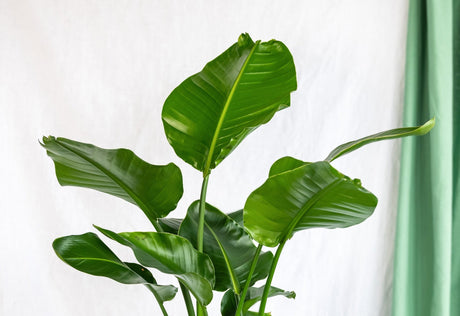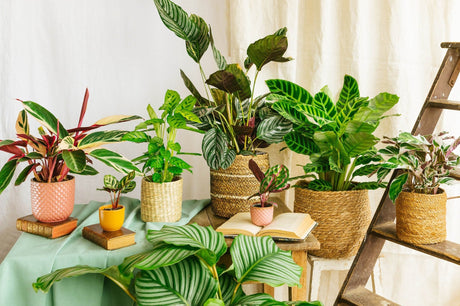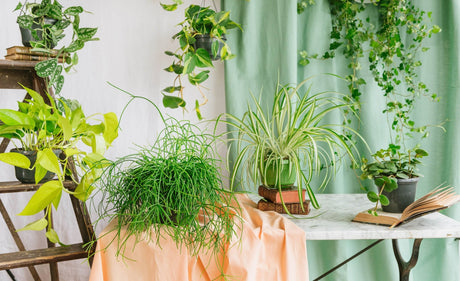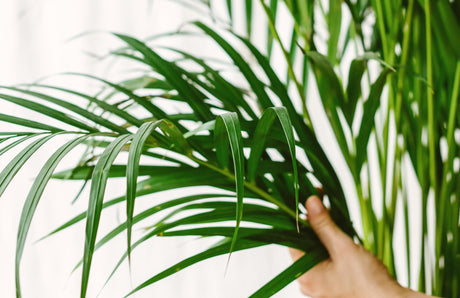The Hoya Kerrii is distinguished by its leaves fleshy in the shape of heart, which can be green vivid or variegata (with patterned variegated).
1. Watering the Hoya Kerrii
Hoya Kerrii prefers moderate watering . Let the soil dry out slightly between waterings to avoid overwetting the roots, because a soil constantly damp can lead to rot of roots.The frequency of watering depends on factors such as temperature ambient, the brightness and the size of the pot. In general, water approximately once times every every 1 to 2 weeks during the period of growth active in spring and summer. In winter, when the plant is dormant, reduce the frequency of watering to once every 3 to 4 weeks.
Tip: Before watering, always check the moisture of the substrate by inserting your finger into the ground until about 2-3 cm deep. If the soil is dry at this depth, it's usually time to water.
2. Watering techniques
- To avoid an excess moisture on the leaves and avoid the risk of rot, prefer watering from below. Place the pot in a saucer containing water and let the plant absorb water by capillarity. Remove any excess water remaining in the saucer after one hour.- Preferably use water at temperature ambient and leave rest tap water for a few hours before watering to allow evaporation of the chlorine. The Hoya Kerrii prefers water slightly acidic, so if the water in your area is very hard, consider using water filtered.
3. The Hoya Kerrii
Exhibition Exposure is a factor crucial for the health and growth of the Hoya Kerrii. This plant generally enjoys a exposure light, but it is essential to strike a balance by avoiding exposure direct in the sun during the hottest hours of the day.Place it near a window facing east or west, where it can benefit from a fair amount of natural light, but where direct sunlight is filtered or subdued.4. When should I repot my Hoya Kerrii?
Hoya Kerrii is a plant that is generally growing slow, and it has not needs to be repotted frequently. However, it is essential to monitor the health of the plant and check if it needs repotting. Here are some pointers on when to repot your Hoya Kerrii:Excessive rooting
If you observe that the roots are starting to come out of the current pot's drainage hole or wrap around the bottom of the pot, it may be time to repot.Slowed growth
If your Hoya Kerrii is showing slow growth or showing signs of lack of root space, repotting may be beneficial to stimulate its growth.Increased watering frequency
If you have to water your plant much more frequently than usual because the soil dries out quickly, this may indicate that the plant needs a larger pot.5. What fertilizer should I use for my Hoya Kerrii?
To fertilize your Hoya Kerrii, it is recommended to use a fertilizer balanced specifically designed for plantsApplication frequency
During your plant's active growth period (spring and summer), you can apply the fertilizer every two to four weeks. On the other hand, in fall and winter, when the plant goes into dormancy, reduce the frequency to once every two months or so.Dilution
It is best to dilute the fertilizer in water according to the manufacturer's instructions before applying it. A dilute solution allows easier absorption and reduces the risk of over-fertilization.6. Diseases of Hoya Kerrii
Hoya Kerrii is generally a plant hardy, but like all plants it can be subject to some diseases or problems of health. Here are some diseases common of Hoya Kerrii that you might face:Root rot
Overwatering or a poorly drained substrate can lead to root rot in Hoya Kerrii. Affected roots become soft, brownish and may have an unpleasant smell. To prevent root rot, be sure to let the growing medium dry out slightly between waterings and use a well-draining potting mix.Oidium
Powdery mildew is a fungus that can affect Hoya Kerrii leaves, especially in a hot, humid environment. You may notice a white or gray powder on the leaves, which can cause them to turn yellow and warp. To prevent powdery mildew, be sure to provide good air circulation around the plant and avoid excess humidity.Mealybugs and aphids
These insect pests can attack the Hoya Kerrii by sucking sap from its leaves. You may notice sticky spots, yellow or distorted leaves, as well as the presence of small insects on the plant. Use appropriate insecticides or natural solutions to control mealybug and aphid infestations.Yellow leaves
Yellow leaves can be caused by a variety of factors, such as overwatering, lack of light, improper fertilization, or environmental stress. Identify the underlying cause and make the necessary adjustments to promote better plant health.Falling leaves
Excessive leaf drop can be a sign of water stress, too low temperatures, drastic changes in environmental conditions, or root disease. Make sure you fully understand your Hoya Kerrii's watering, light, and temperature needs, and make changes as appropriate.7. Delivery and receipt of your plant
Just adopted a- Your plant is dry
- Is your plant wet ? Let the potting soil dry.
- Should I repot my plant right away ? No ! Wait until next spring or for signs that your plant needs repotting.






